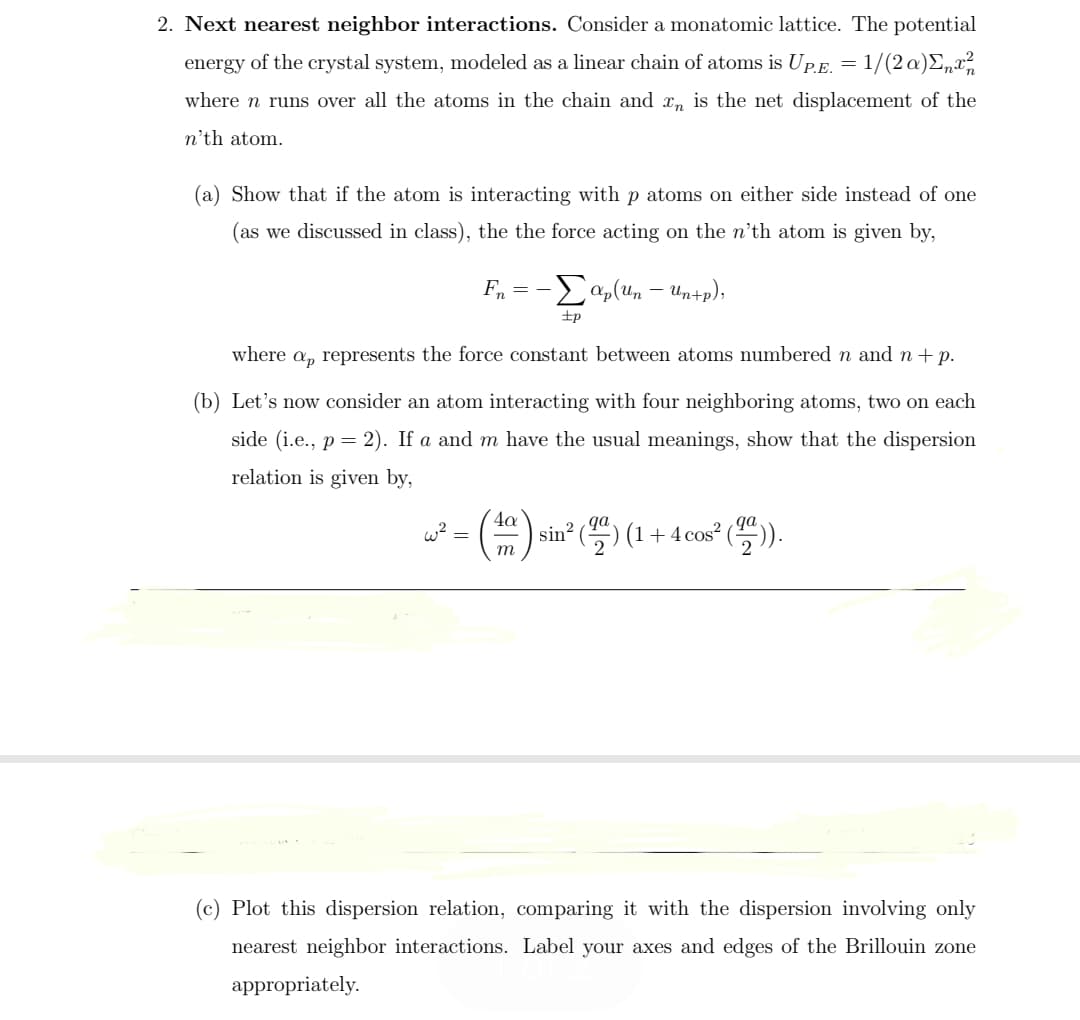Next nearest neighbor interactions. Consider a monatomic lattice. The potential energy of the crystal system, modeled as a linear chain of atoms is UpE. = 1/(2 a)E„x? where n runs over all the atoms in the chain and x, is the net displacement of the n'th atom. (a) Show that if the atom is interacting with p atoms on either side instead of one (as we discussed in class), the the force acting on the n'th atom is given by, Fn -Eap(un – Un+p); +p where a, represents the force constant between atoms numbered n and n+ p. (b) Let's now consider an atom interacting with four neighboring atoms, two on each side (i.e., p = 2). If a and m have the usual meanings, show that the dispersion relation is given by, 4a sin? (등) (1+ 4 cos? (등)). qa qa w? т
Next nearest neighbor interactions. Consider a monatomic lattice. The potential energy of the crystal system, modeled as a linear chain of atoms is UpE. = 1/(2 a)E„x? where n runs over all the atoms in the chain and x, is the net displacement of the n'th atom. (a) Show that if the atom is interacting with p atoms on either side instead of one (as we discussed in class), the the force acting on the n'th atom is given by, Fn -Eap(un – Un+p); +p where a, represents the force constant between atoms numbered n and n+ p. (b) Let's now consider an atom interacting with four neighboring atoms, two on each side (i.e., p = 2). If a and m have the usual meanings, show that the dispersion relation is given by, 4a sin? (등) (1+ 4 cos? (등)). qa qa w? т
Related questions
Question

Transcribed Image Text:Next nearest neighbor interactions. Consider a monatomic lattice. The potential
energy of the crystal system, modeled as a linear chain of atoms is UpE. = 1/(2 a)E„x?
where n runs over all the atoms in the chain and x, is the net displacement of the
n'th atom.
(a) Show that if the atom is interacting with p atoms on either side instead of one
(as we discussed in class), the the force acting on the n'th atom is given by,
Fn
-Eap(un – Un+p);
+p
where a, represents the force constant between atoms numbered n and n+ p.
(b) Let's now consider an atom interacting with four neighboring atoms, two on each
side (i.e., p = 2). If a and m have the usual meanings, show that the dispersion
relation is given by,
4a
sin? (등) (1+ 4 cos? (등)).
qa
qa
w?
т
Expert Solution
This question has been solved!
Explore an expertly crafted, step-by-step solution for a thorough understanding of key concepts.
This is a popular solution!
Trending now
This is a popular solution!
Step by step
Solved in 2 steps with 2 images
